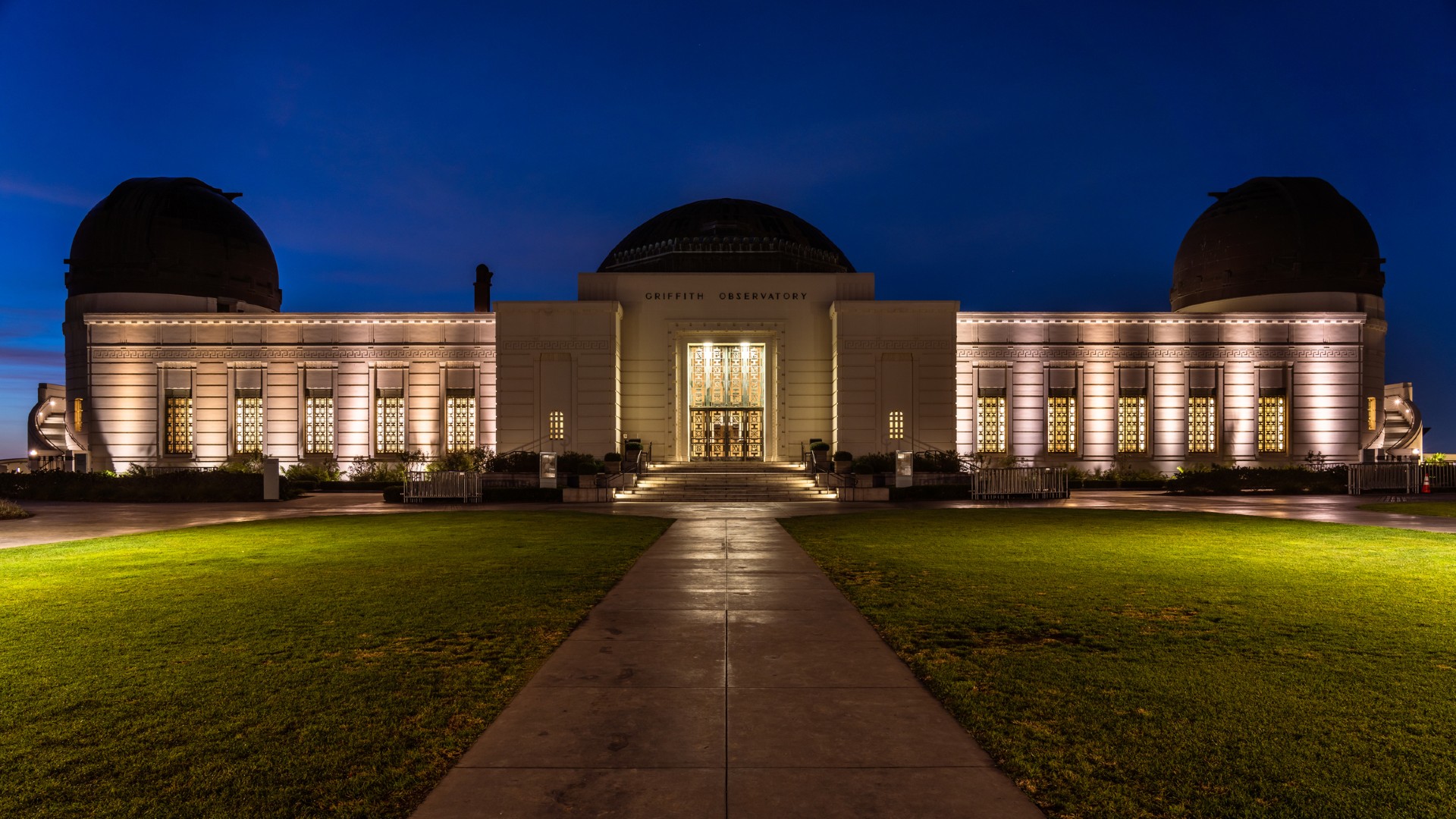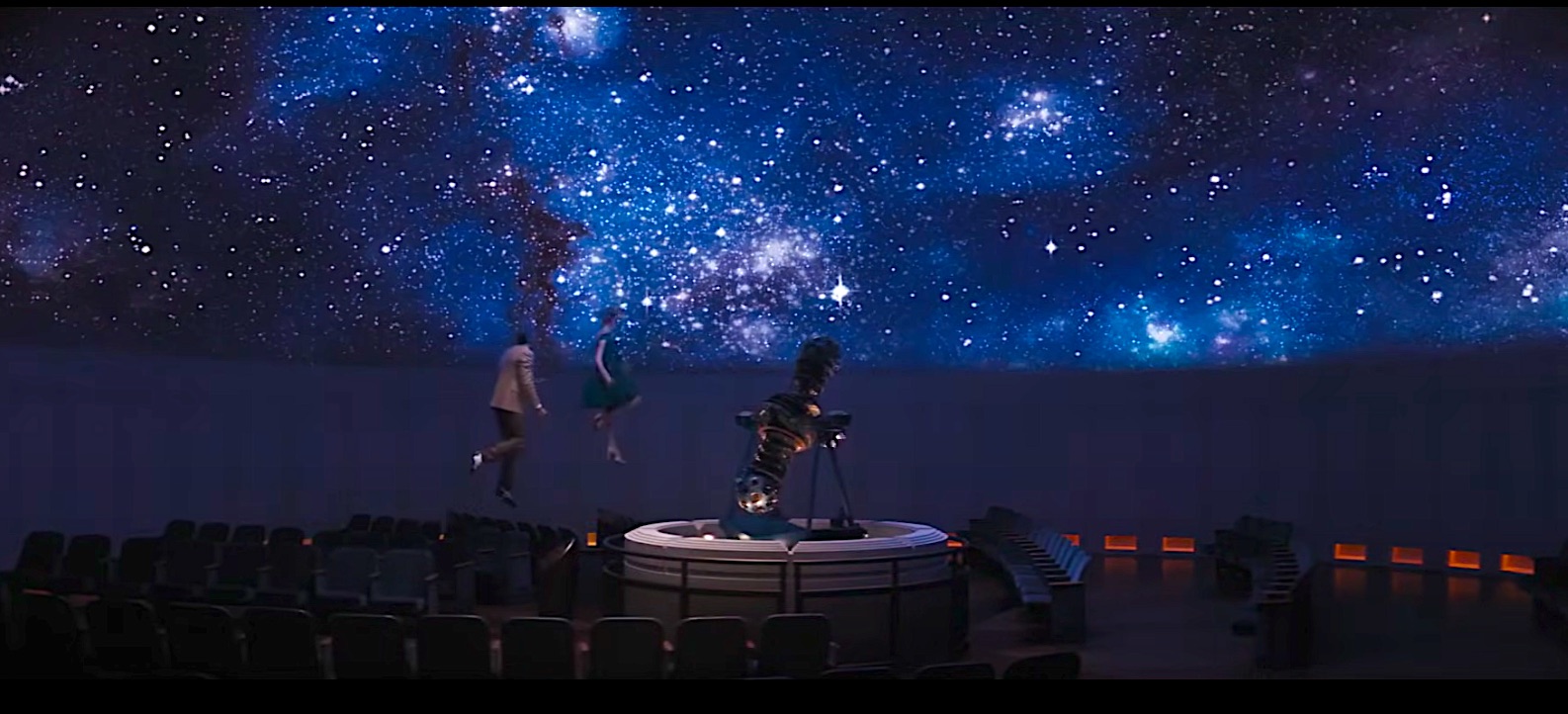
Next year will mark the 90th anniversary of the Griffith Observatory, that stately Art Deco landmark poised atop the southern slope of Mount Hollywood in Los Angeles' Griffith Park, and the grand old lady has never been more popular, especially when seen in blockbuster movies and TV series.
Noted for its bright Beaux-Arts/Art Deco concrete exterior, distinctive copper-paneled domes, interior marble floors, exotic woods, bronze metalwork and travertine panels, this wondrous window to the cosmos had been visited by over 85 million people in its long history.
Thanks to Griffith Jenkins Griffith, a Welsh immigrant who came to America as a teenager in the 1860 to claim his future in Mexican silver mines and California real estate, the City of Los Angeles was blessed by his generous donation of 3,015 acres in 1896 for the creation of a splendid park for his newly adopted hometown.

"It must be made a place of rest and relaxation for the masses, a resort for the rank and file, for the plain people," Griffith stated during the Dec. 16, 1896 ceremony. "I consider it my obligation to make Los Angeles a happy, cleaner, and finer city. I wish to pay my debt of duty in this way to the community in which I have prospered."
Just before his death in 1919, Griffith bequeathed funds for the purpose of building a spectacular observatory in Griffith Park that would include a Greek theater, a motion picture screen, and science exhibits which would all be free to the public.

But it wasn't until 1930 that the Griffith Trust put together a team of scientists to realize the dream, including astrophysicist George Ellery Hale, Caltech physicist Edward Kurth, and amateur astronomer Russell W. Porter. Together with the Griffith Trust and Los Angeles Park Commissioners, they chose architects John C. Austin and Frederick M. Ashley to finalize plans for the main observatory.
The ambitious $400K project broke ground June 20, 1933 in the midst of the Great Depression and its small army of Cal Tech consultants, Mount Wilson engineers, talented sculptors, masons and construction workers were able to complete their monumental task within two years.

This Art Deco temple to the stars welcomed its first visitors on May 14, 1935 and throughout the proceeding decades the Griffith Observatory has evolved into one of the most popular public observatories on the planet. Now home to the Samuel Oschin Planetarium and the Leonard Nimoy Event Horizon Theater, its wealth of exhibits, programs, educational events and busy calendar make it a must-see destination. The original 12-inch Zeiss Refracting Telescope and Coelostat & Solar Telescopes have been peered into by more than seven million stargazers.

But part of the Griffith's mystique has been immortalized by the multitude of Hollywood feature film and TV show cameos over the years, perhaps most notably in 1955's "Rebel Without a Cause." More recently, a futuristic iteration of its Zeiss telescope was viewed in this year’s "Kingdom of the Planet of the Apes," where the hero chimp Noa and his friends stared into the corroded eyepiece of the celestial device reclaimed by nature in a post-apocalyptic world.

Another spotlight setting showcasing the stunning structure was in director James Cameron's "The Terminator" (1984), where Arnold Schwarzenegger's lethal cyborg encounters a trio of punk rockers (including a young Bill Paxton) outside the Griffith and demands to have their clothes.
All total, the majestic observatory has over 170 screen credits, more than most iconic actors, starting with "The Phantom Empire" (1935), then further roles in "Flash Gordon Conquers the Universe" (1940), "The Dark City" (1950), "War of the Colossal Beast" (1958), "The Rocketeer" (1991, "Bowfinger" (1999), and "La La Land" (2016).
It's been a longstanding backdrop for more sci-fi fare like "Crash of the Moons" (1954), "Tobor the Great" (1954), "The Cosmic Man" (1959). "Back to the Future II" (1989), "Transformers" (2007), and "Moonfall" (2022). On the small screen, the stately Griffith Observatory and its grounds have been utilized in everything from "Mission Impossible," "Melrose Place," and "Buffy the Vampire Slayer," to "Star Trek: Voyager," "NCIS: Los Angeles," and Prime Video's adaptation of "Fallout."

—
—
—
"Griffith Observatory has been in so many motion pictures, but there's a deeper relationship that goes back very early," Griffith Observatory director Dr. Ed Krupp said in a 2022 interview. "It has to do with the observatory learning from Hollywood, and then also Hollywood learning things astronomical. This is particularly important in terms of the new planetarium show 'Signs of Life,' where we created our own production studio and hired absolute masters of digital animation craft because we’re in the middle of Hollywood."
An enchanting monument to inspiration and wonder representing humankind's thirst for knowledge, the Griffith remains indelibly linked to the entertainment industry, whose dreams live on just below the observatory's hillside perch amid the sparkling lights of the Los Angeles basin.







